Free weights, and Olympic lifting, will always be part of the equation of fitness. There may be selectorized machines, there may be multigyms, there may be functional trainers, and there may be new motor driven, connected resistant systems. But there will always be a place for Olympic lifting.
With the right trainer, or the right program, there's simply too much data that shows how well olympic lifting works and the improvements that can be made with it. And while some programs will use it as a component and some will make it the centerpiece, it has a ton of validity.
And so, as sort of as a follow-up of our blog about bench presses versus squat racks, we're going to delve into the different types of Olympic lifting apparatus. Not the Bench Presses, but the full lifting stations.
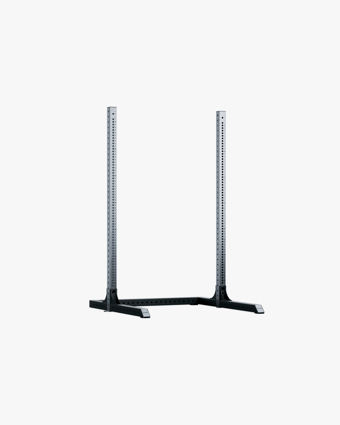
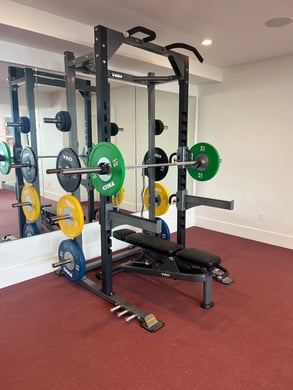
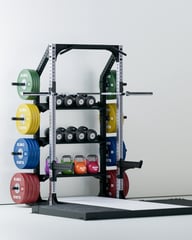 Half racks also can have storage built into them, which can be a huger space saver. This is a newer idea, and it used to be pretty poorly made, but now that Eleiko is doing it...well, they *are* the very top of the freeweight hierarchy.
Half racks also can have storage built into them, which can be a huger space saver. This is a newer idea, and it used to be pretty poorly made, but now that Eleiko is doing it...well, they *are* the very top of the freeweight hierarchy.
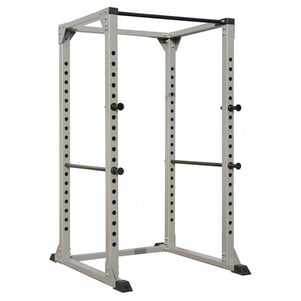 A full rack, or power rack, also has two sets of uprights coming out of the floor frame. But one set of uprights is in the back, one set of uprights is in the front. The j-hooks are actually built into the back or the front set of uprights, and the safeties are normally joined between the front and the back set of uprights, providing the safest and most stable lifting situation for very heavy lifts. Also, having opposing j-hooks lets you take off from more positions.making front squats easier.
A full rack, or power rack, also has two sets of uprights coming out of the floor frame. But one set of uprights is in the back, one set of uprights is in the front. The j-hooks are actually built into the back or the front set of uprights, and the safeties are normally joined between the front and the back set of uprights, providing the safest and most stable lifting situation for very heavy lifts. Also, having opposing j-hooks lets you take off from more positions.making front squats easier.
Broadly speaking it's all divided into three categories. Squat racks, half racks, and full racks.
And while there are split versions and double versions and rigs, those three categories cover the main categories.
A squat rack is basically a 4x4 or 4x5 metal u-shape in the floor with a single set of uprights coming out of it. Those uprights are where the J-hooks and safeties come out of.

That's it that's your basic squat rack. In the early stages of lifting, these upright were sometimes separated, but to the safety concerns they are almost always now connected to give some stability and rigidity and safety.
Yes, I'm sure there was liability involved...
These are very popular because they can be lower, or higher, joined with a pull-up bar at the top, or not. We have 6 ft tall versions, 7 ft tall versions, at 8 ft tall versions. In most residential situations this is an extremely popular option due to the lower ceiling height and the savings. Good variations can be as little as 800 or as much as 2000. But below that price they lack strength and safety, as the safeties are shorter or cannot carry as much.
Yes, I'm sure there was liability involved...
These are very popular because they can be lower, or higher, joined with a pull-up bar at the top, or not. We have 6 ft tall versions, 7 ft tall versions, at 8 ft tall versions. In most residential situations this is an extremely popular option due to the lower ceiling height and the savings. Good variations can be as little as 800 or as much as 2000. But below that price they lack strength and safety, as the safeties are shorter or cannot carry as much.

The half rack is next. A half rack is on that same 4x5 metal platform but there are two sections of uprights coming out of the floor frame that are joined at the top for added stability and rigidity. Much like the squat rack, the person lifting is lifting in front of the two sets of uprights, as the J-hooks and safeties are coming out of the front set of uprights. But the rear set of uprights can be used for plate storage, there's room for band pegs in the front of this, the pull-up bar will be a lot more stable on this, and for those reasons and more the half rack is a really good situation for lifting.
Half-Racks can be as little as $2000 or as much as $5500
Half-Racks can be as little as $2000 or as much as $5500
 Half racks also can have storage built into them, which can be a huger space saver. This is a newer idea, and it used to be pretty poorly made, but now that Eleiko is doing it...well, they *are* the very top of the freeweight hierarchy.
Half racks also can have storage built into them, which can be a huger space saver. This is a newer idea, and it used to be pretty poorly made, but now that Eleiko is doing it...well, they *are* the very top of the freeweight hierarchy.  A full rack, or power rack, also has two sets of uprights coming out of the floor frame. But one set of uprights is in the back, one set of uprights is in the front. The j-hooks are actually built into the back or the front set of uprights, and the safeties are normally joined between the front and the back set of uprights, providing the safest and most stable lifting situation for very heavy lifts. Also, having opposing j-hooks lets you take off from more positions.making front squats easier.
A full rack, or power rack, also has two sets of uprights coming out of the floor frame. But one set of uprights is in the back, one set of uprights is in the front. The j-hooks are actually built into the back or the front set of uprights, and the safeties are normally joined between the front and the back set of uprights, providing the safest and most stable lifting situation for very heavy lifts. Also, having opposing j-hooks lets you take off from more positions.making front squats easier.There's also something called a monster rack where there's another set of uprights built behind the two lifting uprights, for plate storage, and additional stability. Obviously this is when you don't 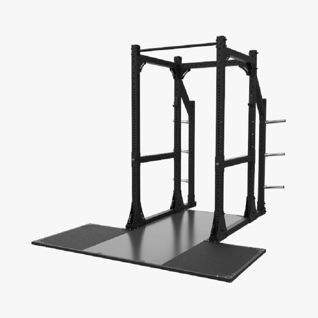 have to worry about space but you're planning on having somebody test the limits of their bar and plate set. For some people, this is just a 'real' power rack. Plate storage is really a thing in a gym.
have to worry about space but you're planning on having somebody test the limits of their bar and plate set. For some people, this is just a 'real' power rack. Plate storage is really a thing in a gym.
Half racks and full racks can be made into double racks, which are still built on floor assemblies, but it's normally a back-to-back design, so the half rack or the full rack will face both directions.
 have to worry about space but you're planning on having somebody test the limits of their bar and plate set. For some people, this is just a 'real' power rack. Plate storage is really a thing in a gym.
have to worry about space but you're planning on having somebody test the limits of their bar and plate set. For some people, this is just a 'real' power rack. Plate storage is really a thing in a gym. Half racks and full racks can be made into double racks, which are still built on floor assemblies, but it's normally a back-to-back design, so the half rack or the full rack will face both directions.
A rig is when you have multiple racks going together without the floor assembly. That's the biggest way to understand the difference between a rig and a rack. Rigs do not have floor assemblies and they're normally bolted directly into the floor.
Now, the difference between different versions of these in terms of price and quality come down to design and durability. Better racks are 3x3 square or tubed steel, but the gauge of the steel and the quality of the steel has more to do with the strength. The best racks will use low-alloy steel and/or cold-rolled steel.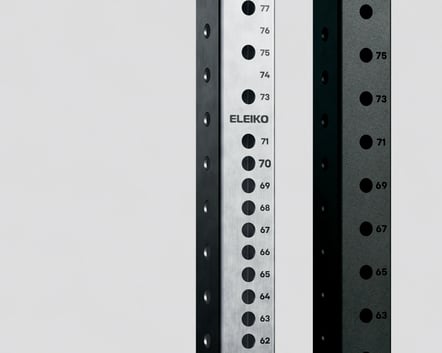
In terms of design, the strength and ease of adjustability on the J-hooks and safeties is critical, as are the placement and number of adjustment slots. Sometimes, the availability of add on pieces, like dip handles, Landmines, split-squats, etc
If you have any questions, please feel free to get with ConnectFit and let us help guide you!
Now, the difference between different versions of these in terms of price and quality come down to design and durability. Better racks are 3x3 square or tubed steel, but the gauge of the steel and the quality of the steel has more to do with the strength. The best racks will use low-alloy steel and/or cold-rolled steel.

In terms of design, the strength and ease of adjustability on the J-hooks and safeties is critical, as are the placement and number of adjustment slots. Sometimes, the availability of add on pieces, like dip handles, Landmines, split-squats, etc
If you have any questions, please feel free to get with ConnectFit and let us help guide you!




COMMENTS